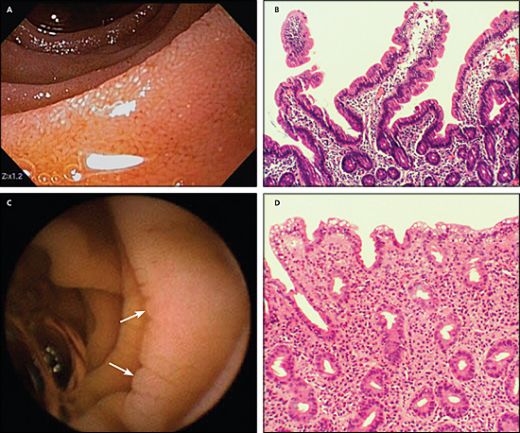
A tick no bigger than a pin-head has put a state task force to work trying to decide what should be done about the growing problem of Lyme disease in Virginia.
The tiny black “deer tick” can produce a rash with a clear center and various painful symptoms that, unless treated fairly soon, can be hard to cure.
“Lyme disease is endemic,” or present, in the Lynchburg area, said Haley Phillips, epidemiolo-gist at the Central Virginia Health District.
An emerging recognition of Lyme disease in most parts of Virginia could possibly lead to changes in medical practices and standards if long-term sufferers of the disease get the recognition they’re seeking.
Most of the infection’s victims are diagnosed, treated fairly quickly with antibiotics, and recover fully — although their cases often don’t get into statis-tics reported by the Centers for Disease Control.
Some stages of Lyme disease can last longer, Phillips said — for six months or more.
Patients who have been cured are not the Lyme victims the Virginia task force is focusing on.
People who say they have chronically suffered from Lyme disease for years are the force behind a task force that was appointed in mid-October by Dr. bill Hazel, state secretary of Health and Human Resources.
Lynn Aycock, of Lynchburg, said she’s one of Lyme disease’s chronic victims and suffered from it for 20 years.
An outdoor-sports enthusiast, Aycock said she’d had many tick bites over the years but never had the supposedly telltale bull’s-eye rash.
She had other symptoms, in-cluding chronic joint and muscle pain and even failing eyesight. Aycock said she researched Lyme disease herself, and found a doctor in Washington, D.C., who was “Lyme literate.” this doctor used a blood test called the Western blot, which her other physicians had not ordered.
The D.C. doctor prescribed a longer-than-usual course of the doxycycline antibiotic along with other antibiotics and supple-ments, Aycock said, and her pains were relieved.
“I got my life back,” Aycock said. “Within eight months I was able to do my sports again,” whitewater boating and riding horses, she said.
Hazel said the task force would produce recommendations for Gov. Bob McDonnell regard-ing diagnosis, prevention, public education and medical treatment of Lyme disease. it also will consider the impact of Lyme disease on children.
The task force plans to meet Tuesday in Fairfax County to hear testimony from experts.
The task force also will ad-dress a controversial area of medicine.
“The Virginia Department of Health and the CDC do not rec-ognize a chronic Lyme disease condition,” Phillips said, although they do acknowledge Lyme symptoms can continue for many months.
Del. Scott Garrett, R-Lynchburg and a physician, said, “The Infectious Diseases Society of America has stated categori-cally that there is no proven benefit to the long-term use of antibiotics for Lyme disease,” and that “the CDC has come out publicly with the same pro-nouncement.”
Garrett serves on a House of Delegates committee that con-sidered Lyme disease legislation last February and, with 100 Lyme disease advocates in the audi-ence, delayed the measure until 2011.
Garrett agreed with Phillips’ analysis of the Lyme situation. “there are clearly reported cases here in Lynchburg,” Garrett said.
Spread by the deer tick in its nearly microscopic nymphal stage, Lyme disease’s early signs in people usually look like a circular red skin rash with a clear “bull’s eye” at its center. but not always; sometimes the disease is more insidious.
Before it attaches to a person, the nymphal deer tick may look like a piece of grit, a freckle or poppy seed. once attached, it may, or may not, feel like a bump and cause a skin reaction. A tick in someone’s hair may go unno-ticed.
Victims of Lyme disease may feel several of these symptoms: fatigue, chills, fever, headache, muscle and joint aches, and swollen lymph nodes, according to the Centers for Disease Con-trol.
Ticks are most active from April through July, and even people who live an indoor life-style can get them just by going to their mailbox, Phillips said.
People who go outdoors should check themselves, their children and pets for ticks, Phil-lips said.
The Virginia Tech Extension Service offered this advice about ticks:
• Avoid tick-infested areas such as tall grass and dense vegetation.
• Don’t brush against weeds and tall grass.
• Wear light colored clothing so ticks can be found easily.
• Tuck pant legs into socks so ticks stay on the outside of pants.
• Conduct tick checks on children and pets every four hours.
• use tick repellents that contain at least 30 percent DEET.
• Ask your veterinarian to recommend tick controls for your pets.
• Treat clothes with permanone (be sure to follow all label precautions).
Less than half of all deer ticks are infected with Lyme disease, according to university researchers.
Patients who see a doctor soon after the symptoms appear usually are diagnosed quickly, treated with the doxycycline antibiotic, and recover.
According to the Extension Service, four kinds of ticks are commonly found in Virginia: The lone star tick, the American dog tick, the brown tick and the deer tick.
• The lone star tick, which has a small whitish dot on its back, is found mostly east of the Blue Ridge Mountains.
• The American dog tick is found mostly west of the Blue Ridge Mountains.
• The brown dog tick appears throughout Virginia.
• The deer tick is found pri-marily in the northern and east-ern parts of Virginia. In addition to Lyme disease, it can carry ehrlichiosis, which also responds to doxycycline treatment.
The lone star tick and the American dog tick can carry Rocky Mountain spotted fever, the extension service said. Spot-ted fever occurs much less often than Lyme disease, according to CDC statistics.